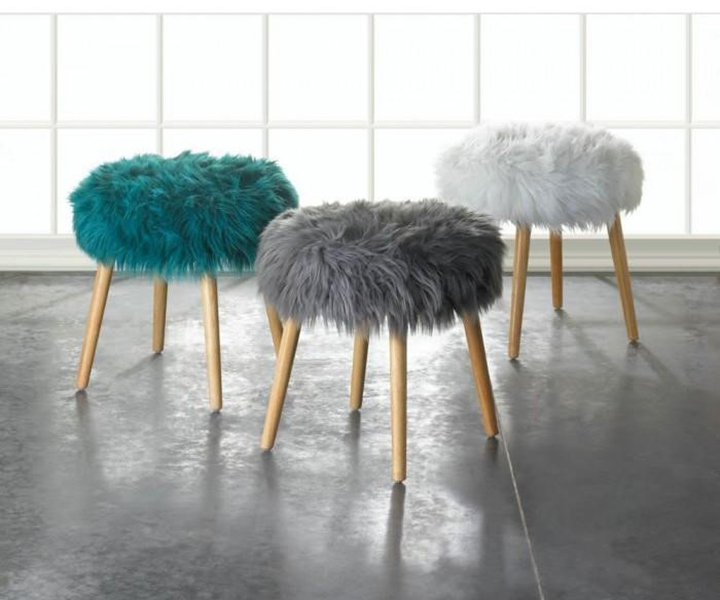Six animals you used in your home decor
Taxidermy aside, animals are used in our homes much more than we think as they are used for more than their skins.
Cows
Cows are used for 83% of the world’s leather and is heavily in your home. As well is for leather upholstery and cowhide rugs, other parts of cows are used in our homes.

Faux Leather Sofa, approved by PETA
Fats, fatty acids and protein meals from cows are used in a wide variety of everyday household items, including in candles, toothpaste, soap and deodorants. Paint brushes that are labeled as “camel hair” brushes are not really made from camel at all (not that this would really make them any better). Actually, these brushes are composed of the fine hairs from cow’s ears and tails.
Ducks
How many ducks are plucked for their feathers so you can plump one cushion? And where is it that duck feathers are likely to be found in your home? Here are some places:-
- Headboards
- Chairs
- Sofas
- Pillows & Cushions Pouffes & Footrests Mattress toppers Quilts
- Pet beds

Vegan-Friendly recycled plastic cushions and duvets
The Fine Bedding Company who have introduced NIMBUS Pearl SMARTDOWN® duvet and pillows. They’re made from 100% recycled PET plastic bottles and are one of the latest innovations to use recycled plastic.
In a bid for comfort, down – which is the soft layer of bird feathers – is used in our homes through soft furnishings, beddings and upholstery. While it may keep you warm as a quilt, it’s hardly doing the same job in your cushions. It’s really just a matter of plushness and isn’t a nice trade off for the ducks themselves.
Let’s ignore that minor irritation of downs and feathers from ducks and geese escaping through the tightest of fabric weaves, managing to prick you every now and them. Let’s concentrate a second on the commitment, albeit reluctant for animals, who are plucked live. Yes, while alive. At a mere 10 weeks old their feathers are ripped from the root.
While there are companies who source from ethical duck feather suppliers, you cannot pretend that it’s like this across the board, and this is why your ethical purchasing power comes to play. When it comes to pillows, feathers don’t offer much in the way of support especially to those who suffer with aches and pains. Health care specialists would recommend more supportive alternatives, of which there are many, further demonstrating that the use of feathers can easily be avoided.

Teal, Gray and white faux fur footstools from Giftspiration
Sheep
Sheep come in many varieties so the vast array of wool found in any one home can vary from the staple of Merino. Merino sheep bred for meat do not produce a fleece with a fine enough staple for this purpose so it’s hardly a fact that wool is a by product of the meat industry.
Icelandic wool
After slaughter, sheep skins are turned into leather used in car upholstery, clothing and shoes. The bones, hooves and horns of sheep are also used to make products such as gelatine, tape, brushes and pet food ingredients.
Goats
Soft cashmere comes from the wool of cashmere goats. Other types of goats, such as Angora goats, also produce wool, but it is a different texture than cashmere. All wools can be used to make clothing such as sweaters, socks, scarves and cushions.
Rabbits
Rabbits provide us with mohair and angora. In the case of angora, you could assume that removing the long and soft fur from Angora rabbits would be a simple and painless task.
However, in a country that are rather neglectful in terms of animals rights, and course this is where 90% of Angora is produced, the brutality is far from painless. In China rabbits are tied to racks and their fur is torn from their bodies by hand. Then after a mere two months, the process is undertaken again. This level of cruelty hardly justifies the production of your decorative cushions lounging on your sofa. It’s that same cushion you dare not use for anything more than to beautify and personalise your home.
Pigs
The by-products of pig are are used in water filters, insulation, man-made rubber, plastics, floor waxes, and glues. Lard is fat from pig abdomens and is used in shaving creams, soaps, make-up, baked goods and other foods.